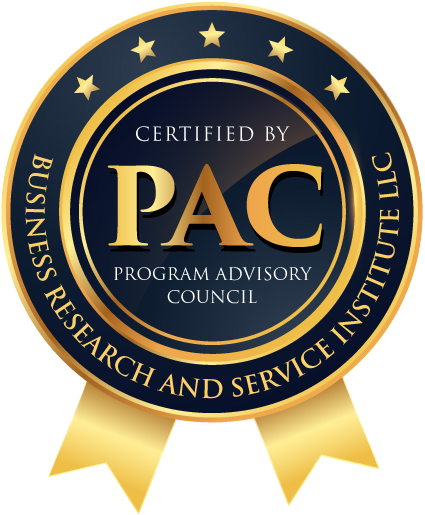Strategic sourcing is a crucial aspect of supply chain management that involves the systematic and collaborative process of analyzing the procurement needs of an organization to identify the most effective approaches for sourcing goods and services. It goes beyond simply finding the lowest cost option and focuses on creating long-term value and competitive advantage for the organization.
The Importance of Strategic Sourcing in Supply Chain Management
Cost Reduction
One of the primary objectives of strategic sourcing is to achieve cost savings without compromising on quality. By carefully analyzing the procurement process and leveraging economies of scale, organizations can negotiate better prices with suppliers and reduce overall procurement costs.
Related: 12 Proven Cost Reduction Strategies
Risk Management
Strategic sourcing helps organizations mitigate risks associated with supply chain disruptions, supplier failures, and market fluctuations. By diversifying the supplier base and establishing contingency plans, organizations can better cope with unexpected events and ensure business continuity.
Supplier Relationship Management
Building strong relationships with suppliers is essential for successful strategic sourcing. By fostering collaboration and open communication, organizations can align their goals with those of their suppliers, leading to improved quality, innovation, and responsiveness.
Key Components of Strategic Sourcing
Market Analysis
Before making sourcing decisions, organizations conduct thorough market analysis to identify trends, evaluate potential suppliers, and assess market dynamics. This helps in understanding the supply market and identifying opportunities for cost savings and innovation.
Supplier Evaluation and Selection
Once potential suppliers are identified, organizations evaluate them based on various criteria such as quality, reliability, financial stability, and ethical practices. The goal is to select suppliers that offer the best value proposition and align with the organization’s strategic objectives.
Negotiation
Negotiation plays a crucial role in strategic sourcing, as it enables organizations to secure favorable terms and conditions with suppliers. Effective negotiation involves understanding the needs and priorities of both parties and finding mutually beneficial solutions.
Contract Management
After reaching agreements with suppliers, organizations manage contracts to ensure compliance, monitor performance, and resolve disputes. Contract management involves maintaining accurate records, tracking key performance indicators, and updating contracts as needed.
Strategic Sourcing Process: Key Components
Supplier Identification and Selection
The first step in strategic sourcing involves identifying potential suppliers who can meet the organization’s needs. This process entails conducting market research, evaluating supplier capabilities, and assessing factors such as pricing, quality, reliability, and geographical reach.
Supplier Evaluation and Qualification
Once potential suppliers are identified, they undergo a thorough evaluation to determine their suitability for partnership. This evaluation includes assessing factors such as financial stability, past performance, compliance with regulatory requirements, and alignment with the organization’s values and objectives.
Negotiation and Contracting
After selecting preferred suppliers, negotiations ensue to establish mutually beneficial agreements. This stage involves discussing terms and conditions, including pricing, payment terms, delivery schedules, quality standards, and service level agreements. Contracts are then formalized to document the agreed-upon terms and provide a framework for the relationship.
Risk Management
Strategic sourcing involves identifying and mitigating risks inherent in the supply chain. This includes assessing potential disruptions, such as supplier bankruptcies, natural disasters, or geopolitical conflicts, and implementing strategies to minimize their impact. Risk management strategies may include diversifying supplier portfolios, establishing contingency plans, or investing in technology to enhance visibility and resilience.
Performance Measurement and Improvement
Once contracts are in place, it’s essential to monitor supplier performance against predefined metrics and key performance indicators (KPIs). Regular performance reviews enable organizations to identify areas for improvement, address any issues or deviations from the agreed-upon terms, and foster continuous improvement in the supplier relationship.
7 Steps Strategic Sourcing Process
1. Assess Current Situation and Define Objectives
Before embarking on the strategic sourcing process, organizations need to assess their current procurement practices and define clear objectives. This involves conducting a comprehensive review of existing supplier relationships, procurement processes, and performance metrics to identify areas for improvement and establish goals for the sourcing initiative.
2. Market Research and Supplier Identification
The next step is to conduct thorough market research to identify potential suppliers who can meet the organization’s requirements. This involves gathering information on market trends, supplier capabilities, product offerings, pricing structures, and industry benchmarks to inform supplier selection decisions.
3. Evaluate and Qualify Suppliers
Once potential suppliers are identified, they undergo a rigorous evaluation process to assess their suitability for partnership. This includes reviewing their financial stability, assessing their production capabilities and capacity, conducting site visits or audits, and evaluating their track record in delivering quality products or services.
4. Negotiate and Establish Contracts
After selecting preferred suppliers, negotiations commence to finalize the terms and conditions of the partnership. This involves discussing pricing, payment terms, delivery schedules, quality standards, warranties, and other contractual provisions. Once agreements are reached, contracts are drafted and signed to formalize the relationship.
5. Implement and Monitor Performance
With contracts in place, it’s crucial to implement the agreed-upon terms and closely monitor supplier performance. This involves tracking key performance indicators (KPIs), conducting regular performance reviews, addressing any issues or deviations from the contract terms, and fostering open communication and collaboration with suppliers.
6. Manage Risks
Strategic sourcing also involves proactively managing risks associated with the supply chain. This includes identifying potential risks, such as supply disruptions, quality issues, or regulatory compliance issues, and implementing strategies to mitigate these risks. Risk management strategies may include diversifying supplier portfolios, establishing contingency plans, or investing in technology to enhance visibility and resilience.
7. Continuous Improvement
Finally, strategic sourcing is an ongoing process that requires continuous improvement and optimization. This involves seeking opportunities for cost savings, process efficiencies, and supplier relationship enhancements through regular performance reviews, benchmarking against industry standards, and implementing best practices. By embracing a culture of continuous improvement, organizations can drive long-term value and competitive advantage through their strategic sourcing initiatives.
Challenges in Strategic Sourcing
Despite its benefits, strategic sourcing comes with its own set of challenges:
Globalization
Globalization has increased the complexity of supply chains, making it challenging to identify and manage suppliers across different geographies and cultures.
Supplier Dependence
Relying too heavily on a single supplier or a small group of suppliers can create dependency issues and increase the risk of supply chain disruptions.
Technology Integration
Integrating technology into the strategic sourcing process can be challenging, especially for organizations with outdated systems or limited IT resources.
Best Practices in Strategic Sourcing
To overcome these challenges and achieve success in strategic sourcing, organizations can adopt the following best practices:
Collaboration
Collaborate closely with internal stakeholders, such as procurement, finance, and operations, as well as external stakeholders, such as suppliers and customers, to align goals and priorities.
Continuous Improvement
Continuously assess and improve sourcing processes, systems, and strategies to adapt to changing market conditions and emerging trends.
Data Analysis
Utilize data analytics tools and techniques to gather insights, identify opportunities, and make informed sourcing decisions based on data-driven evidence.
Future Trends in Strategic Sourcing
Looking ahead, several trends are shaping the future of strategic sourcing:
- Digitalization: Increasing adoption of digital technologies, such as artificial intelligence and blockchain, to streamline sourcing processes and enhance visibility and transparency.
- Sustainability: Growing emphasis on sustainable sourcing practices to reduce environmental impact, comply with regulations, and meet consumer demand for ethically sourced products.
- Reshoring: The trend towards bringing manufacturing and sourcing operations closer to home to reduce reliance on overseas suppliers and mitigate supply chain risks.
Conclusion
In conclusion, strategic sourcing is a critical component of supply chain management that enables organizations to optimize procurement processes, reduce costs, mitigate risks, and build strong supplier relationships. By following best practices, leveraging technology, and adapting to emerging trends, organizations can achieve sustainable competitive advantage in today’s dynamic business environment.
FAQs
What are the benefits of strategic sourcing?
Strategic sourcing offers several benefits, including cost reduction, risk management, and improved supplier relationships.
How does strategic sourcing differ from traditional procurement?
Unlike traditional procurement, which focuses primarily on cost savings, strategic sourcing takes a more holistic approach, considering factors such as quality, innovation, and long-term value.
What role does data analytics play in strategic sourcing?
Data analytics enables organizations to gather insights, identify trends, and make informed sourcing decisions based on data-driven evidence.
How can organizations overcome challenges in strategic sourcing?
Organizations can overcome challenges in strategic sourcing by fostering collaboration, embracing continuous improvement, and leveraging technology.
What are some future trends in strategic sourcing?
Future trends in strategic sourcing include digitalization, sustainability, and reshoring, which are shaping the future of procurement practices.

Aftab Khan is a logistics specialist with over forty years of experience in all aspects of supply chain and logistics management. He is an engineer by training and holds an MBA, besides several certifications from APICS/ASCM, ISCEA, and BRASI. Mr. Khan is the Executive Director of Business Research and Service Institute LLC, USA.





